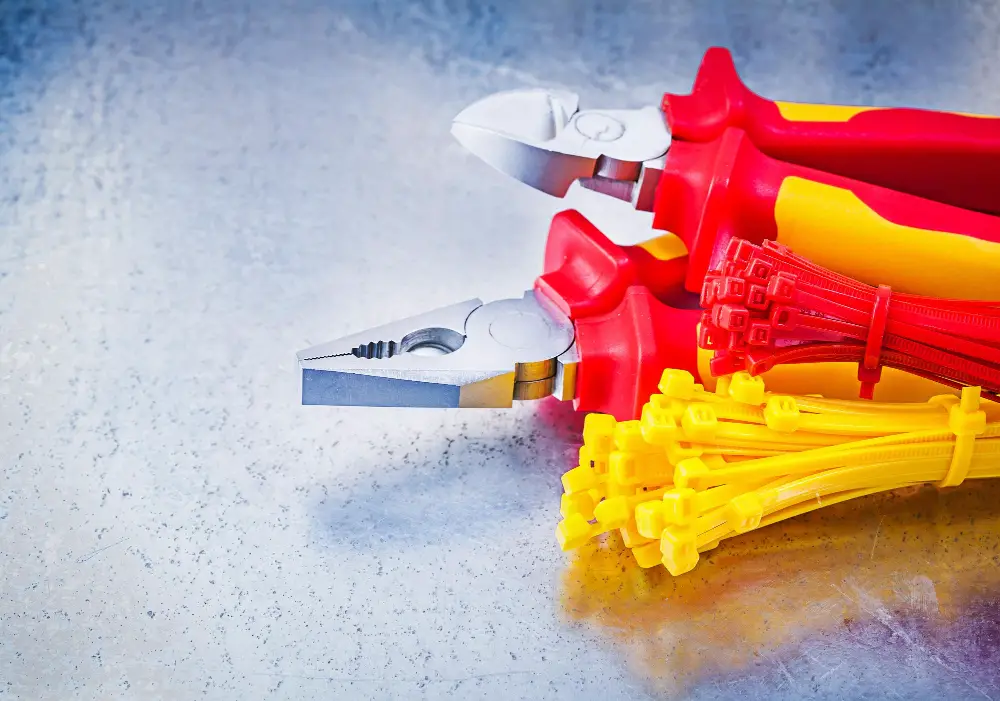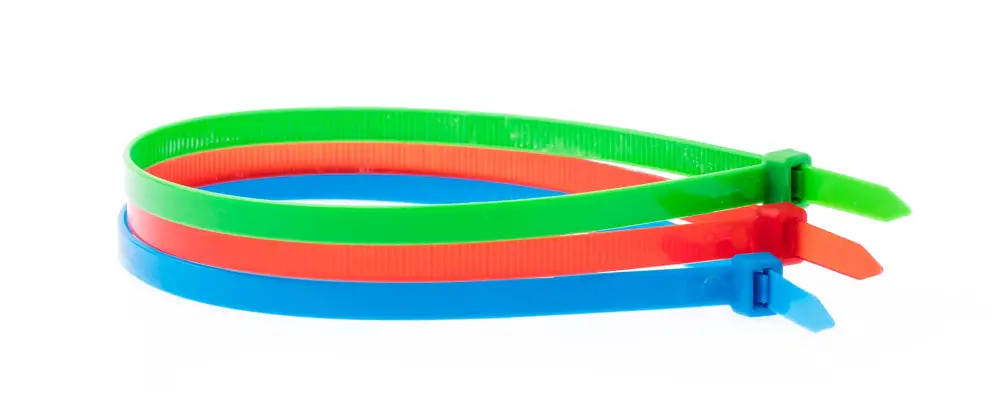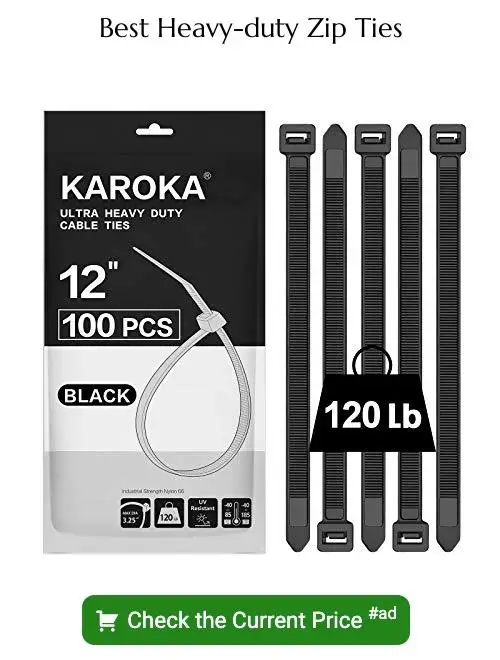Last updated on
Discover the practicality of using zip ties to fix couch springs, because this low-cost technique can restore the comfortable seating you once enjoyed.
Fixing couch springs with zip ties is a simple DIY task that can breathe new life into your sagging couch. This article provides a step-by-step guide to help you restore your couch to its former glory using just zip ties. From identifying the problem springs to the proper placement and fastening of zip ties, every detail is covered. By the end, you’ll have all the knowledge you need to fix your couch springs and enjoy comfortable seating once again.
Let’s dive into the process!
Key takeaways:
- Visual inspection to identify loose or broken springs
- Use durable zip ties and pliers for proper repair
- Attach and tighten zip ties in an X format for support
- Test repaired area for stability before finishing
- Take preventative measures to avoid future spring damage
Table of Contents
Identifying The Issue

Firstly, a visual inspection is key. Sagging cushions or discomfort while sitting could indicate potential spring damage.
Take off the couch cushions and flip the couch to get a better view of the springs. Examine closely to locate the loose or broken ones. Springs that are detached from the couch frame or have lost their original shape are problematic and require fixing.
Using your fingers, carefully feel the tension in the springs. A spring in proper condition should be firm and resilient. Remember, accurately detecting the issue will simplify the entire repair process and might save your favorite couch from an early retirement.
Tools Needed: Zip Ties and Pliers

Investing in heavy-duty, durable zip ties is essential for strong repairs. Typically, 8 inches long and at least 50-pound strength zip ties are recommended.
On the other hand, a good pair of pliers will allow for tightening the zip ties for a secure fit. If any zip tie excess remains, pliers with a cutting edge can handle trimming.
Remember, quality tools play a vital role in executing a successful couch spring fix.
Procedure: How to Attach and Tighten Zip Ties

To start with, place two zip ties around the spring that needs fixing, with enough looseness to allow a sizable gap for the next steps. Then, cross another zip tie through those spaces, in an X format, ensuring it connects the bottom and top of the spring. This is essential to provide support in the areas that bear the most weight.
Next, carefully pull the intersecting zip tie and make sure it’s tight. Use a pair of pliers to tighten any slack and lock the zip tie into position. Repeat the process with the other zip tie around the spring.
Note that it’s necessary to secure multiple springs, not just the faulty spring, to redistribute weight evenly. For each spring, repeat the previous steps, ensuring all zip ties are tightly secured.
As a finishing touch, you can trim the ends of the zip ties to keep everything neat.
For a casual user, the process might seem a little complex at first, but patience and attentiveness to detail go a long way.
Checking Stability: Test the Repaired Couch Spring
Once the zip ties are securely in place, the next step is to verify their stability. Gently press down on the repaired area to see how it responds. It’s possible that you may discover additional weak points after applying some pressure. Witnessing a familiar sag, or hearing any squeaks suggest the need for more zip ties. Keep in mind, applying too much force can result in damaging the newly repaired springs, so exercise caution during this testing phase. Remember, successful repair isn’t about the couch feeling as hard as a board, it should still deliver the plush comfort it was designed for while providing adequate support.
Preventing Future Spring Damage

To reduce the likelihood of a recurrence, it’s crucial to take some preventative measures.
1. Avoid Overloading the Couch: Even a high-quality couch can fall victim to excessive weight. Ensure that the weight is spread evenly when multiple people are using the furniture.
2. Rotate Seat Cushions: Rotating seat cushions distributes the weight and reduces the pressure on the springs beneath.
3. Regular Inspection: Although this may sound overbearing, regular checks will indeed prevent small issues from escalating into massive problems.
4. Manage Children’s Use: Bouncing or roughhousing on the couch increases potential damage. Make sure children understand a couch isn’t a trampoline.
Implementing these measures will help maintain the integrity of your couch springs and potentially increase their lifespan. Bear in mind these tips are not foolproof, but they indeed mitigate potential risks.
Importance of Repairing Couch Springs

Taking fast action to mend sagging or broken couch springs significantly boosts the lifespan of your beloved lounging spot. First and foremost, it preserves comfort by preventing the uneven distribution of cushioning that often leads to stiff springs poking you during your relaxation time. More importantly, proactive repairs avoid further degradation of other springs or the frame’s integrity, saving you costly replacements in the future.
Remember: a delayed fix is a foundation for greater, more complex troubles. Enjoy uninterrupted relaxation and protect your investment by nipping these common furniture issues in the bud.
The Benefit of Using Zip Ties for Couch Spring Repair

Zip ties provide an efficient and cost-effective solution for repairing couch springs.
1. Economical: They are inexpensive compared to the cost of hiring a professional or buying new furniture.
2. Durable: Zip ties are made from nylon, a strong material resistant to environmental degradation, ensuring the repairs are long-lasting.
3. Easy to Use: Their simple structure means you don’t need complex tools or a high level of expertise to use them.
4. Accessible: They can be found at most local and online stores, making them a readily available option.
5. Versatile: Uniquely, zip ties can be used to fix various types of springs, irrespective of the couch model or style.
In essence, zip ties are a sustainable solution for couch spring repairs.
FAQ
Why is my sofa sinking?
Your sofa might be sinking due to sagging cushions or issues with the springs, either being loose or broken.
How do you fix a sagging couch with non removable cushions?
To fix a sagging couch with non-removable cushions, cut foam to the right size, wrap it in batting for softer edges, insert this into the cushion, close the sides, then position it back on the couch.
What are the indicators of broken couch springs?
Indicators of broken couch springs include uncomfortable sagging when sitting, noticeable creaking noises, visible protrusions under the upholstery, and lumps or unevenness in the couch’s surface.
How can zip ties be used in couch spring repair?
Zip ties can be used in couch spring repair by fastening them around the broken spring and the adjacent intact spring to bolster the support.
Could you explain the step-by-step process of fixing couch springs with zip ties?
The process of repairing couch springs with zip ties involves accessing the underneath part of the couch, aligning the damaged spring into its correct position, threading zip ties through the spring and adjacent springs, and then pulling and fastening the ties firmly.





